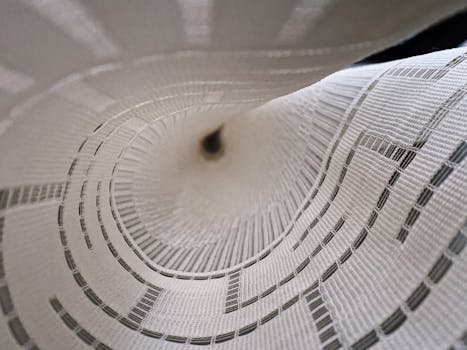
Mastering the Art of Mixing Textures and Patterns for a Dynamic Look
Takeaways: Mixing textures and patterns can transform your space into a dynamic and visually appealing environment. Embrace contrasts, find balance, and remember to maintain a cohesive color palette to achieve a harmonious look.
When it comes to interior design, one of the most exciting and creative aspects is mixing textures and patterns. This technique can breathe life into your home, creating a space that feels dynamic and full of personality. Whether you’re redecorating a room or just looking to refresh your decor, understanding how to effectively combine different elements can make a significant difference. In this article, we’ll explore the best practices for mixing textures and patterns to achieve a cohesive and stylish look.
Understanding Textures and Patterns
Before diving into the how-to of mixing textures and patterns, it’s essential to understand what these terms mean in the context of design. Textures refer to the surface quality of materials—how they feel and look. This can include anything from smooth silk and rough burlap to shiny metals and soft wool. Patterns, on the other hand, are the decorative designs that can be printed or woven into materials. Common patterns include stripes, florals, geometric shapes, and abstract designs.
The key to a successful mix is ensuring that the textures and patterns you choose complement each other rather than clash. This involves considering the scale, color, and style of both elements.
Tips for Mixing Textures
1. Start with a Neutral Base: Begin by selecting a neutral palette for your base furniture and walls. This provides a blank canvas that allows for more freedom when adding textures and patterns. Shades of white, beige, gray, and soft pastels work well as they can accommodate a variety of styles.
2. Layer Different Textures: Mixing various textures adds depth to your space. Consider combining soft textiles such as plush cushions and throws with harder materials like wood or metal. A velvet sofa paired with a rustic wood coffee table creates an inviting contrast.
3. Use Textured Accessories: Incorporate textured accessories such as rugs, curtains, and artwork. A chunky knit throw blanket can soften the look of a sleek leather chair, while a woven basket can add an organic touch to any room.
4. Play with Scale: When mixing textures, consider their scale. Larger textures, like a big wool rug, can anchor a room, while smaller textures, such as decorative pillows, can add subtle interest. Mixing these elements creates a balanced and visually appealing environment.
Combining Patterns Effectively
1. Choose a Focal Pattern: Start with one standout pattern that you love. This could be a bold floral print or a striking geometric design. Use this as a base to build upon, incorporating other patterns that complement it.
2. Mix Different Pattern Types: Combine various types of patterns—florals with stripes, geometrics with abstract designs. This creates an exciting visual dialogue. Ensure that the colors in each pattern coordinate to maintain harmony.
3. Limit Your Color Palette: Stick to a cohesive color scheme when mixing patterns. This doesn’t mean everything has to be matchy-matchy, but having a common color thread ties the different elements together, creating a more unified look.
4. Consider Scale and Contrast: Just as with textures, mixing the scale of patterns can enhance the overall effect. Pair large patterns with smaller ones to create balance. For example, a large floral print can be beautifully complemented by a small polka dot or a narrow stripe.
Conclusion








